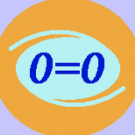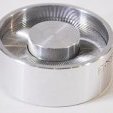-
Posts
18484 -
Joined
-
Last visited
-
Days Won
108
studiot last won the day on March 22
studiot had the most liked content!
Profile Information
-
Location
Somerset, England
-
Favorite Area of Science
applications of physical sciences
-
Occupation
Retired Technical Consultant
Recent Profile Visitors
The recent visitors block is disabled and is not being shown to other users.
studiot's Achievements

SuperNerd (12/13)
3k
Reputation
-
Perhaps favourite responses are because there isn't a one-method-fits-all approach as not all wallpapaers are born equal. So the first task, before stripping, is to determine the type and nature of the 'wallpaper'. In some countries, particularly in Europe (not the UK), it is common to take the wallpaper with you when you move. So obviously the stripping method cannot involve damage to the paper. Indeed special 'strippable' papers are marketed in these countries. Moving on some wallpapers (including the UK) are placed over lining paper or some other lining material such as 'cotina' for either extra insulation or damage concealment or anti-damp or all three. Again obviously you may not want to damage the underlying layer. As already noted, not all glues are the same either. Traditional UK glue is based on plant starch for relative ease of subsequent stripping, but may encourage mould and mildew in damp conditions. More recently modern glues have been available, some designed for ease of stripping, some for the opposite. The paper itself also makes a difference. Modern vinyl wallpaper is impervious to water and often even to steam so iNow's comment about scarrifying the wall is appropriate. Finally, love the pics @Sensei +1.
-
Good morning, David. You are very welcome if you have anything useful to discuss or can add anything useful to any existing discussion. It is discussions that are classified in sections, not members; members can access all sections. There are several engineers, and retired engineers here. The official introduce yourself thread is here: Perhaps a moderator would be kind enough to move it there. Please note that in your first 24 hours you are limited to 5 posts as an antispam measure.
-
This thread is growing ever more Terry Pratchett and ever less sf/home/sciences/physics/relativity. I sem to remember discussing the speed of light in vacuuo, backalong. What, pray, is the speed of sound in vacuuo ?
-

LinkDrive: syncs with gravity’s harmonic ripples
studiot replied to LloydFulham's topic in Speculations
Lots of goals, but which side scored them ? -
WAT (wall of text) luckily the 5 post rule will soon intervene.
-
Did you actually have anything to discuss here or is it just the weed talking ? You are correct in that Truth in maths has a different meaning from Truth in other disciplines, such as religion or politics and fyi it does not appear at all in Science. Your are incorrect in that maths is neither a language nor a conversation, though there are mathematical models of language. You need to focus this thread quickly before it either withers on the vine through exhaustion or is closed in disgust by the moderators.
-
The most important piece of knowledge for someone with a PhD is the limit of their own knowledge. That this is so in economics was brought to poignant focus when the concensus of PhD folks brought about the crash of 2008 due to failure to understand the Black-Scholes equation and its assumptions and limitations.
-
Good article. +1 Not sure how much current the battery in a 'smart meter' supplies but they are supposed to last many years and only use short bursts of current. For interest here is a good dexcription of conventional thermal nuclear batteries, which also exploit the long life of the battery for example in spacecraft. https://uknnl.com/customer-solutions/space-exploration/how-a-space-battery-works/
-
Was there a mistake here ? donald-jump-fertilisation-president ?
-
Well I just don't get this vendetta against the SI system. Of the seven base units only one is a pure number that is completely unambiguous. The rest require a real physical standard to measure against, somewhere along the line. Of course alternative sets of base units and quantities can be used, for example in fluid and Continuum Mechanics more generally Force is sometimes used instead of Mass. Isotropy of light ? Do you fully appreciate the difference between invariance and constancy ? A quantity may be one or both or neither.
-
And you are avoiding much of what is said to you. Yes, when I worked with RPS and RLS systems (Tellurometer, Distomat and the like) it was common to measure atmouspheric pressure because it affected the transmission path, not the operation of the electronically equipment locally.
-
I'm not suprised but my finger hurts from all that needless rolling of the mouse button. Only to find at the end of it alleged scientific reasoning from a device that is designed only to pick the most probable (= most frequent) answer from what it has already been fed as calculated by many humans.
-
Always in all cases ?









